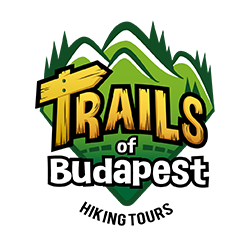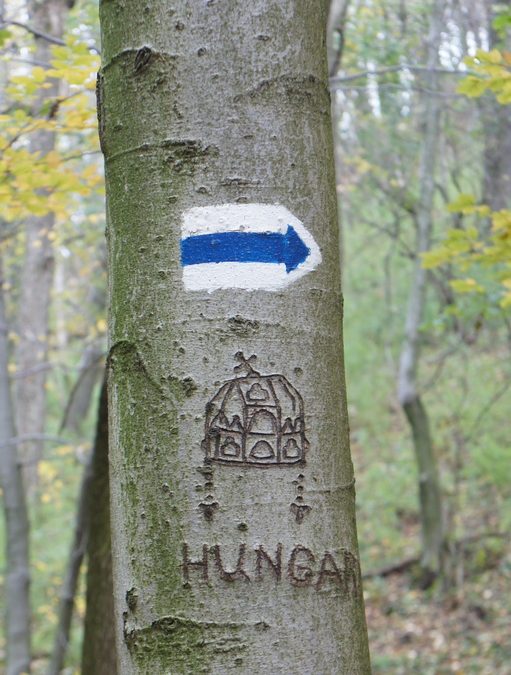Many countries have their own famous trails, like the Appalachian Trail in the United States, the El Camino in Spain or the Pennine Way in the United Kingdom. Of course Hungary also has one, called the National Blue Trail or ’Kéktúra’ (official name: Országos Kéktúra) in Hungarian. If you ask Hungarian hikers about hiking in Hungary, they will surely mention this trail (or they are not proper hikers anyway). It goes through the most beautiful parts of Hungary, so if you want to catch the best of the country and have a longer time, don’t hesitate to start it.
About the trail
The trail stretches from the Western border of the country (Írott-kő), till the North-Eastern border (Hollóháza), and with its 1170 km (~727 miles) length and 27 sections, it is part of the E4 European Long Distance Walking Route. The trails got its name from its trail marker, which is a – surprisingly – blue stripe on a white background.
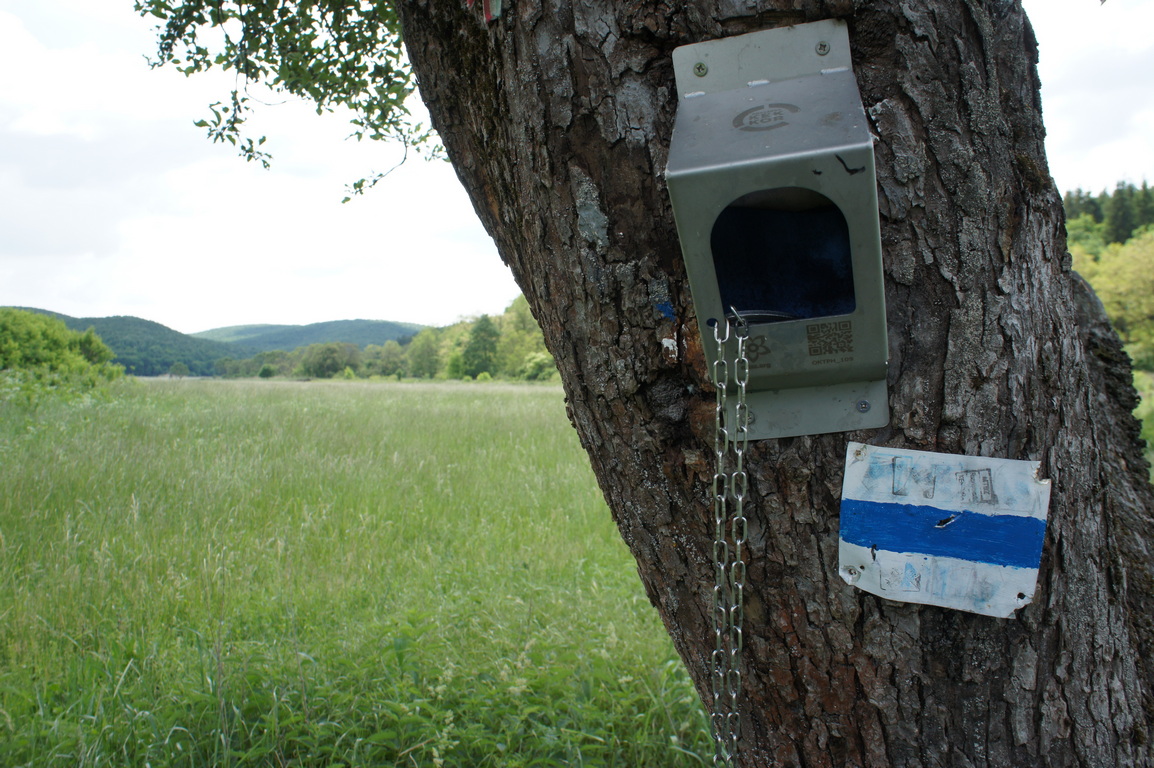
You have to buy a little brochure from the MTSZ (~ Hungarian Hikers’ Association) and an ink pad, because there are 152 checkpoints along the trail with stamps, which you have to use in your brochure as a proof of completion. If you cover the whole distance, and hand in your brochure to MTSZ, you will receive a beautiful enamel badge and a certificate from the association. 
History of the trail
The ’Kéktúra’ has a rich history. Its predecessor was established in 1938 and was named after Saint Stephen (the first king of Hungary), it was 910 km long. After the war they renamed it National Blue Trail, and it also became shorter (852 km), as it was the cold war era, and no one could approach the Iron Curtain on the Western border of Hungary. The first brochure was released in 1953. Later as the international situation became less serious between the superpowers, they could extend the trail till the Western border, and it reached – more or less – its final length. A famous Hungarian hiker, Pál Rockenbauer completed the trail in 1979 with the staff of the Hungarian television, and they made the renowned tv series: One and a half million steps in Hungary, which made the trail even more popular.

Later the National Blue Trail got two new parts in South-Western Hungary and on the Great Plain (with their own brochures and badges), and thus the National Blue Circle was formed. Today there are more than 7000 hikers who completed the ’Kéktúra’.
My connection to the trail
I might have heard about the National Blue trail a long time ago, I don’t really remember, but I definitely got to know it better, when I met my wife. She was also an avid hiker like me, and when she got a ’Kéktúra’ brochure from a friend, I decided to buy one too, and join her on this adventure. We started it in 2015 with a nearby section and as time passed by we went further away from Budapest, to do the longer and more exciting sections. We sacrificed most of our religious and national holidays (except Christmas) to hike on the trail. So far we completed 80% of the distance, which is 937 km (~582 miles), and it took us 53 days to do that.
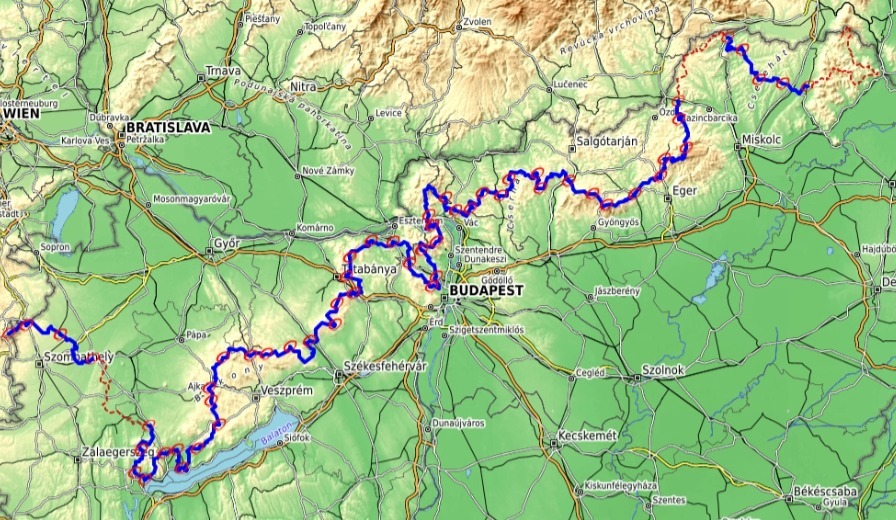
We were planning to finish it last year, but the covid came, and later our first child was born, so we had to delay it.
I want to share with you a few of our memorable experiences on ’Kéktúra’.
Forgotten lands
There are more and less interesting parts of the National Blue Trail as well, but if you want to receive the badge, you have to do all of them. In 2016 March, we decided to complete one of the latter ones, the hilly land of Cserehát. We were soon surprised how beautiful this region is with its charming little villages, and made it clear for us, that we still don’t know Hungary well enough.

Our favourite place was Tornabarakony, a little, almost abandoned village, with only 22 people. The friendly locals gave us a little brochure about the history of the settlement, and we slept in a porch house which is very characteristic for this part of Hungary.
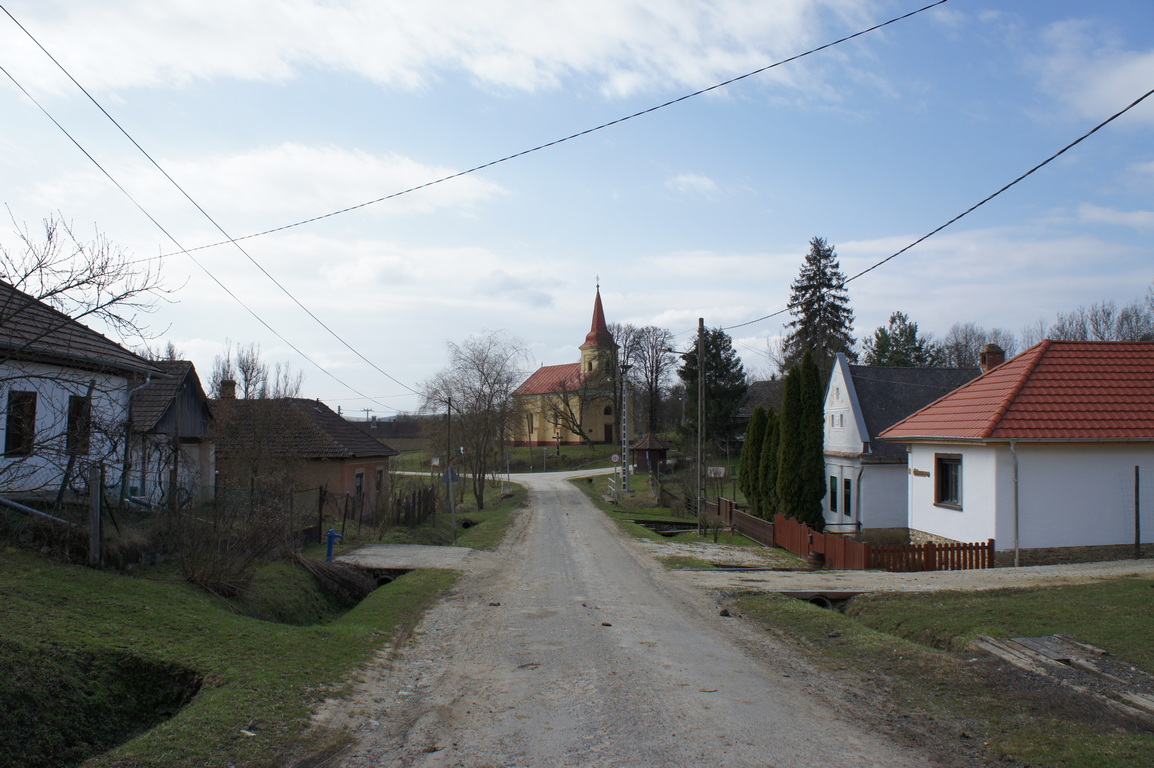
We fell in love with this type of old house instantly, it became our dream to live in such a house.

I hope the village will survive and have more and more inhabitants in the future.
Memorable accommodations
We usually stay in little villages for the night, as we love to talk with the locals a bit to immerse in the mood of the place. These accommodations differ greatly in comfort, but we are tough hikers and not afraid of a little difficulty. Surprisingly our worst and best accomodation were on the same hike in the Bakony mountains. The worst one was in Kisgyón, a house built to room more people with many bunk beds. There was no constant automatic heating, I had to go out to the wood chamber in the courtyard every two hours during the night, to feed our little stove in the room. We wanted to have a fresh shower, after a hard day, but the boiler was hardly working so we gave up. It was terrible, but I do remember this one, not the average ones. The best one was in Bakonynána, a fully refurbished old porch house with a super warm beehive oven (only fed in the evening, the heat lasted till morning).

The host was so friendly, she was waiting for us with a warm local dinner when we finally arrived quite late after a long day. We loved it so much that we returned in a winter to try their infrared sauna as well.
An extreme experience
Probably the most extreme experience of our life happened with us on Easter in 2018, when we decided to go hiking in the Bükk mountains (average height above sea level: 900 m). Actually we wanted to do it earlier, but we wanted to see the early fresh green of the spring, so we delayed it. That spring was really cold, so there was no sign of budding, we could also see some snow up in the mountains. The first two days were ok, though the weather was quite dull, it started raining when we reached our accommodation. On the 1st of April, it was time to see the heart of Bükk, the most beautiful part of this section. In the morning it was still raining… Oh well, we had raincoats, so we left the hikers’ house in hope of better weather, but the rain didn’t want to stop, so after 10 km we were completely soaked (even our underwear).

Then a snowstorm came! Deep in the woods, no settlements, no roads, nothing. We were freezing, and could hardly see our path as the wind was blowing the snow in our eyes.

It was a nightmare, and we had no other option than moving on for another 10 km, until we reached the next village. It was a true April’s Fool Day, but we were not laughing, I think if we survived that, we will survive anything in life.
Stamping
I have to admit, though doing the ’Kéktúra’ is about the experience of hiking in Hungary and not about getting a nice badge, I still just love stamping in my brochure. It is always a good little reward after a hard part.

When we started, they had the old, uniform stamps everywhere, but next year they started to replace all of them with beautiful laser engraved stamps showing an iconic thing of the checkpoint (a castle, a church, a lookout tower, a cave, etc.).

We always have our own ink pad with blue ink, but we love it if there is another ink pad at the place with a different colour. We also try to collect special local stamps too, though they are not necessary, they give a unique flavour to our brochure.
The secret of ’Kéktúra’
I heard about many people who go hiking because of the challenge, they want to cover the longest distance in the shortest time possible, or to do the most elevation they can. Well, the National Blue Trail is not for them. Yes, you can ’run’ through the trail, but then you are going to lose the essence of it. If you want to catch the experience, you have to slow down, stop along the trail to visit interesting places, listen to the locals to learn more about history, breathe in the fresh air of an old forest, enjoy the landscape from the top of a mountain, feel the mood of this country. If you do all this, you won’t be disappointed with hiking in Hungary along the National Blue Trail.
